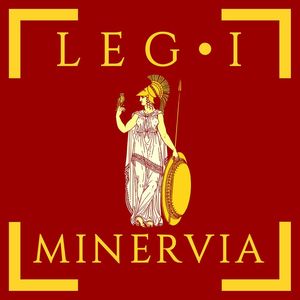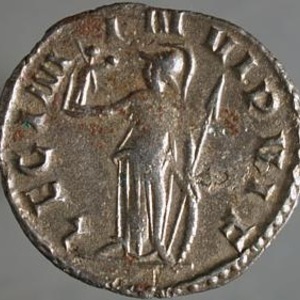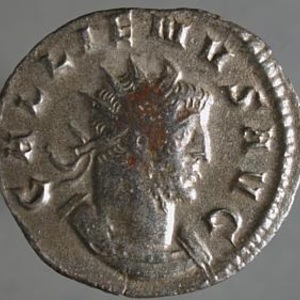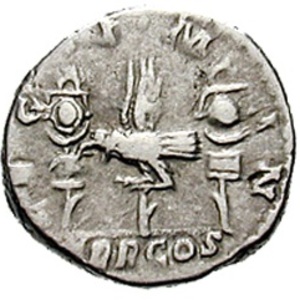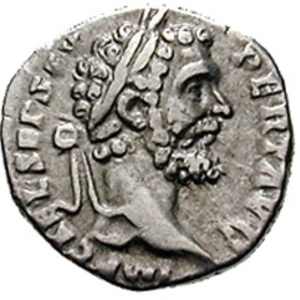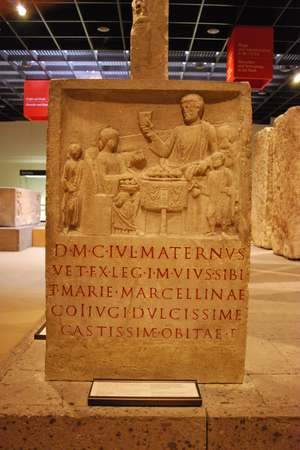Roman Legion - Legio I Minervia
Legio I Minervia (First Legion of Minerva) - a Roman legion of the Imperial era, formed in 82 AD by order of Emperor Domitian for the Germanic campaign. The legion later camped on the Rhine frontier, where it remained for several centuries.
Date of creation: 82 or 87 AD
The Legion lasted until the beginning of the 5th century
Symbol: Minerva, Aries or Capricorn
Military History
- There are two versions of the origin of Legio I Minervia. According to the Roman historian Dio Cassius, the First Legion of Minerva was formed by order of Emperor Domitian. The exact year and month of its foundation are unknown; however, the most likely version is 82 AD, as the following spring, Domitian began a full-scale war against the Germanic tribe of the Chatti, during which the First Legion of Minerva showed itself in actual combat for the first time. According to the second theory, the unit was founded in 87 AD. The legion was stationed in Bonn in the province of Lower Germany, just two days south of the provincial capital, Colonia Agrippina. Its original name was likely "First Flavian Legion of Minerva." It is believed that Minerva was Domitian's favorite patron deity.
- In 89 AD, the governor of Upper Germany, Lucius Antonius Saturninus, raised a rebellion, after which four legions (Legio I Minervia, Legio VI Victrix, Legio X Gemina, Legio XXII Primigenia) marched south and defeated the rebel. Each legion was awarded the honorary title "Loyal and Faithful to Domitian" (Latin: Pia Fidelis Domitiana). After the emperor's death in 96 AD, the name was shortened to Legio I Minervia Pia Fidelis.
- During the reign of Emperor Trajan, the Legion of Minerva participated in the Dacian War as part of the army along with legions VI Victrix and X Gemina. The legion's camp in Bonn was temporarily occupied by a detachment of XXII Primigenia. During the Dacian campaign, the unit was led by the future emperor Hadrian. The Dacian campaign can be seen on Trajan's Column. After the campaign, the legion returned to Bonn (the legion's legate was in Lower Germany in 112 AD).
- Notably, during peacetime, legionaries from the First Legion of Minerva mainly worked in stone quarries. They also engaged in infrastructure construction, building a lime kiln in the Eifel Mountains. Generally, soldiers of the First Legion were often used as skilled labor. The legion also had specially trained personnel—venators, whose duties included capturing animals for games in amphitheaters. Centurion Quintus Tarquitius Restitutus mentioned in his inscription that he captured 50 bears in six months.
- Detachment of the First Legion was also sent to other provinces. It is likely they served in Britain and Mauretania. The First Legion of Minerva, together with units from Legio XXX Ulpia Victrix, participated in Lucius Verus's Parthian campaign under the command of Marcus Claudius Fronto. One of its detachments fought in the Caucasus region and Albania near the Caspian Sea. In 173 AD, the unit fought the Chauci during a campaign initiated against them by the governor of Belgica, Didius Julianus.
- The First Legion of Minerva participated in the Marcomannic campaign of Marcus Aurelius.
- During the reign of Commodus, the legion possibly took part in military actions near Kerkina on the lower Rhine.
- In 193 AD, the First Legion of Minerva sided with Septimius Severus in his struggle against Clodius Albinus and Pescennius Niger.
- Around 196 AD, the unit received the honorary title "Antoniniana" (Latin: Antoniniana).
- In 197 AD, detachments of the First Legion of Minerva, along with Legio XXX Ulpia Victrix, Legio VIII Augusta, and XXII Primigenia, participated in the
- Parthian campaign of Septimius Severus in Lugdunum, and in 197/198 AD, under the command of Claudius Gallus. Gaius Julius Septimius Castinus led detachments from four legions involved in Septimius Severus's Parthian campaign to suppress a rebellion in Gaul and Spain in 207/208 AD.
- After the assassination of Elagabalus, the legion was deprived of the honorary title "Antoniniana." During the reign of Alexander Severus, it was awarded the honorary titles "Severus," "Antoniniana," "Loyal and Faithful," for defeating an alliance of Germanic tribes on the right bank of the Rhine in 231 AD under the command of its legate Titius Rufinus. An altar was erected on the battlefield in honor of this victory.
- The legion supported Maximinus Thrax in his rise to power, earning the honorary title "Maximiniana." After Maximinus's assassination in 238 AD, the unit lost this title.
- During the reign of Gordian III, the legion received the honorary title "Gordiana" (Latin: Gordiana). On coins of Gallienus, it is mentioned with the title "Loyal and Faithful."
- Around 260 AD, a detachment of the legion was stationed in Sirmium. It is most likely that the legion remained loyal to the Gallic Empire.
- A detachment of Legio I Minervia was involved in Maximian's campaign against the Bagaudae and the British usurper Carausius in 285-290 AD. Mentions of the legion appear on Carausius's coins.
- By 295 AD, the legion was classified as limitanei, as confirmed by inscriptions from Bonn.
- On the Arch of Constantine, there is an image where Constantine I transferred part of the legion to his comitatus. This was likely the unit referred to as the Minervii, later mentioned in the Eastern Empire's army.
- In 353 AD, Bonn was destroyed by the Franks, and after that, there are no records of the parts of the First Legion of Minerva stationed in Germany. At the same time, there are no records of the legion's disbandment. According to one version, it should be identified with the legion Primani, mentioned by Ammianus Marcellinus and fighting in the Battle of Argentoratum. Emperor Julian II recaptured Bonn and likely restored the camp. However, it is unknown whether the First Legion of Minerva was stationed there afterward.
- According to the Notitia Dignitatum, around 400 AD, the legion Minervii was under the command of the Magister Militum of Illyricum.
Related topics
List of Roman Legions, Legion, Legionnaire, Roman Empire, Late Roman Empire, Legio VI Victrix, Legio X Gemina, Legio XXII Primigenia, Constantine I the Great
Literature
- Dion Cassius. Roman History. LV. 24. 4.
- Maxfield, 1981, p. 133, 199.
- Marc Lodewijckx (Hrsg.). Belgian Archaeology in a European Setting. Volume 1. — Leuven University Press, 2001. — 42—43 p.
- Notitia Dignitatum. In partibus Orientis. IX.
- R. Kanya. A brief history of the various legions. Legio. 2001.
